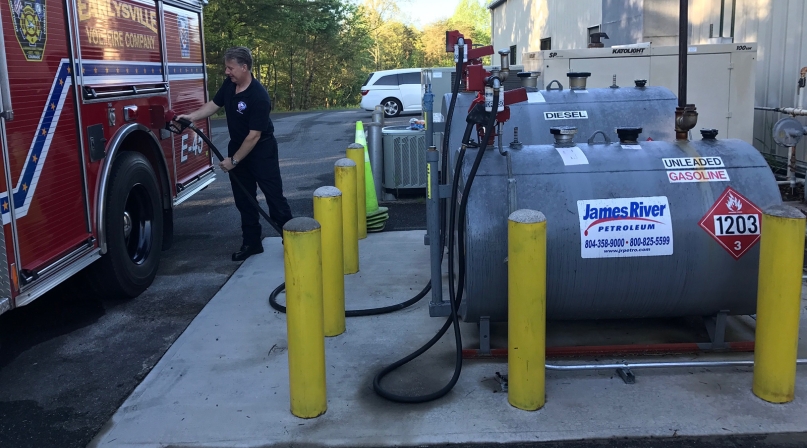Turning Employees Into Entrepreneurs: Implementing Innovative Cost-Cutting Ideas

Problem: Finding new and creative ways to save money in the county budget.
Solution: Encourage employees to submit their cost-cutting ideas to the “Inventing Albemarle” Innovation Fund and implement those ideas.
When Albemarle County, Va., found itself trying to trim its budget as the Great Recession was taking its toll, county employees stepped up with an idea they said could save the county money in the long term. They called it the Innovation Fund and the Board of Supervisors liked it.
Saving money and fostering innovation were equal catalysts for the program, said Louise Wyatt, the county’s organizational development manager.
“Innovation is one of our core values — it’s neat to see some really good ideas brought to life,” said Wyatt, who is part of a team that has judged and approved a few dozen ideas since the program kicked off a few years ago.
The “Inventing Albemarle” Innovation Fund supports projects that yield a return on investment, support an innovation culture and reduce operating costs.
The pilot started out with a one-time budget of $166,500 in FY2014 to jump-start employees’ ideas accepted into the program. That year, nine projects were awarded funding. Those first projects cost the county $86,990 up-front, but in the long run were estimated to save $60,000 in one-time costs and $70,000 a year thereafter.
Along the way, the process for proposing ideas has become more innovative itself, going from an annual multi-page narrative to a quarterly submission by email.
“Innovation shouldn’t just happen once a year,” Wyatt said.
The county holds town-hall style meetings with employees to announce winners and employees can track progress of them on an employee intranet site. Priority is given to projects under $20,000 and projects are tracked quarterly to measure progress.
When employees submit their ideas, they’re asked to respond to several questions including:
- What is your vision?
- What is the problem/challenge?
- What is your proposed solution?
- How does this align with our mission, vision, values, strategic goals?
- How much money do you need?
- Who is on your team?
- If you get the money, what are your next steps?
Now to the nitty-gritty. Here are some of those cost-cutting proposals, and how much time and money they saved the county. Not too surprisingly, technology has helped the county save some bucks.
Here’s a sampling:
- Move the county from paper-based to electronic payments to reduce the cost of paper-based transactions by 50 percent. A Purchase Card program has saved more than 5,000 employee hours in processing, reduced the number of paper checks issued by the county by more than 10,000 and generated rebates exceeding $100,000.
- Use of an automated check-in system in the county’s social services department that has reduced by 27 percent the number of people who need to interact with the front desk staff, while also providing a faster, more private way for clients to check in.
- Creating a Citizen Online Computer Station at the police department for making online police reports. This reduces workload, no longer taking an officer off the street to take a crime report, which used to happen frequently.
Other innovative programs zeroed in on workforce performance. A “Building Better Officers” idea, that came from a staff sergeant, paired new officers with more experienced officers. It was so successful that the police department now funds the program as part of its operating budget.
“It’s almost like a cultural mentorship,” Wyatt said, noting that it helps retain new police officers. “This is an example of a cost avoidance.”
Technology training videos were created so that they could be accessible any time, especially for employees who had geographical or time constraints.
The county’s Fire and Rescue Department created a digital fire-training simulator that firefighters can use for training whenever they need to brush up.
The fire department was involved in another big money-saver for the county, by purchasing additional fuel tanks to ensure that all fire stations are able to easily fuel up without driving long distances and purchase fuel at state contract pricing. This has led to an estimated savings of $100,000 for the FY2017 budget and allowed staff to save time while gassing up.
The fire department was also behind another cost-saving measure: Recruiting community volunteers to sew repairs in torn gear. It not only resulted in faster turnaround time because they didn’t have to contract it out, but they’ve seen cost-savings of $15,000 in its first year.
The county couldn’t be happier with the “Inventing Albemarle” Innovation Fund. More employees are stepping forward with ideas, different departments often work together to address shared problems and it’s created a culture of leadership at all levels, countywide.
Attachments
Related News

UPDATED: USDOT announces availability of $1.2 billion through Safe Streets and Roads for All Grant Program
On February 21, the U.S. Department of Transportation announced the availability of $1.2 billion through the Safe Streets and Roads for All competitive grant program in Fiscal Year 2024 for transportation safety planning or construction projects.

HRSA offers funds to aid care transitions for justice-involved individuals
On April 10, the U.S. Department of Health and Human Services’ Health Resources and Services Administration (HRSA) announced the availability of $51 million in funding opportunities open to HRSA-funded health centers. HRSA-funded health centers, which serve over 30 million patients, play a crucial role in county healthcare systems emphasizing equity and accessibility in healthcare. This new initiative focuses on supporting individuals leaving incarceration by providing health services during the critical 90 days before release, assisting justice-impacted individuals with their return to the community by expanding access to primary healthcare—including mental health and substance use disorder treatment.

House Passes Historic Outdoor Recreation Legislation
The U.S. House passed the bipartisan EXPLORE Act (H.R.6492) on April 9 to boost outdoor recreation opportunities on public lands and aid local economies
